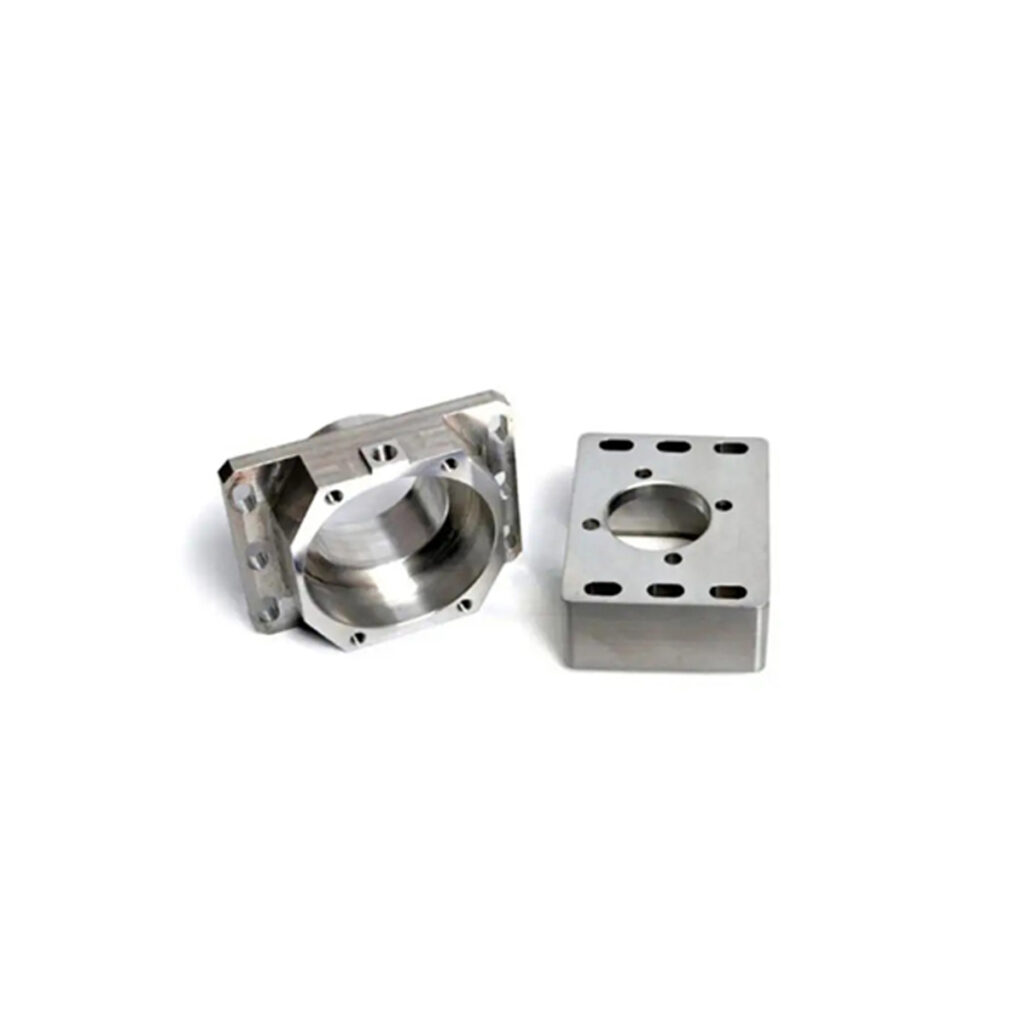In the world of precision CNC machining, a component’s quality is defined not just by its material or finish, but by a language of numbers that is invisible to the naked eye. This language is the language of tolerances. A tolerance is the permissible limit of variation in a physical dimension—the total amount a specific dimension is allowed to deviate from its nominal value.
While a blueprint might specify a shaft diameter of 10 mm, it is the tolerance that gives this dimension its true meaning. Is it 10 mm ± 0.1 mm, or is it 10 mm ± 0.01 mm? The difference may seem minuscule, but in high-stakes industries, it is the difference between a successful product and a catastrophic failure.
This article will explore the critical importance of precision tolerances, delving into why they are non-negotiable in sectors like aerospace and medical devices, and how they impact the functionality, cost, and reliability of every machined component.
Part 1: Understanding the Basics – What Are Tolerances?
At its core, a tolerance defines the acceptable range for a dimension. It is the bridge between the ideal world of digital design and the physical world of manufacturing.
- Nominal Dimension: The “theoretically perfect” target value (e.g., 25.0 mm).
- Tolerance: The specified allowable range of variation (e.g., ±0.05 mm).
- Actual Dimension: The measured value of the finished part, which must fall between the upper and lower limits (in this case, between 24.95 mm and 25.05 mm).
Tolerances can be expressed in several ways:
- Bilateral Tolerances: A variation is allowed in both directions from the nominal dimension (e.g., +0.05/-0.02 mm).
- Unilateral Tolerances: Variation is allowed in only one direction (e.g., +0.00/+0.08 mm).
- Geometric Dimensioning and Tolerancing (GD&T): A more sophisticated system that defines not just the size, but also the form, profile, orientation, location, and runout of features. GD&T provides a comprehensive framework for ensuring parts fit and function correctly.
The Fundamental Trade-Off: There is an inverse relationship between tolerance tightness and cost. Holding a tolerance of ±0.005 mm is exponentially more expensive than holding one of ±0.1 mm. It requires more advanced machinery, more skilled operators, more time, and more sophisticated inspection equipment. Therefore, the goal is not to make every tolerance as tight as possible, but to specify them intelligently based on the part’s function.
Part 2: The High-Stakes Consequences of Tolerance Failure
To understand why tolerances matter, one must first understand what happens when they are not met.
- Assembly Issues: The Fit That Fails
- Problem: A part with a diameter on the upper limit of its tolerance may not fit into a mating part with a hole on its lower limit. This is known as an interference fit, or simply, the parts won’t go together.
- Consequence: Production lines halt. Assembly workers spend hours reworking or force-fitting parts, potentially causing damage. This leads to delayed deliveries, increased labor costs, and logistical nightmares.
- Performance and Efficiency Loss
- Problem: In a dynamic system like a gearbox or a hydraulic pump, loose tolerances can lead to excessive clearance between moving parts.
- Consequence: This results in vibrations, increased noise, premature wear, and energy loss. A pump with loose internal tolerances will have lower pressure and efficiency, consuming more power to do the same work.
- Catastrophic Functional Failure
- Problem: This is the most severe outcome, where a part fails completely during operation.
- Consequence: In a consumer product, this might mean a breakdown and a warranty claim. In the industries we will discuss next, the consequences can be far graver.
Part 3: A Case Study in Precision – The Aerospace Industry
In aerospace, the phrase “failure is not an option” is a literal design principle. Every component, from a turbine blade to a simple bracket, operates in an environment of extreme stress, temperature, and pressure.
Why Tolerances are Non-Negotiable in Aerospace:
- Safety and Structural Integrity: An aircraft’s airframe is a complex assembly of thousands of parts. If the tolerances on the structural members are not meticulously controlled, stress concentrations can occur at the points of imperfection. Under the immense loads of flight, this can lead to fatigue cracks and, in the worst case, structural failure.
- Performance of Jet Engines: A jet engine is a masterpiece of precision. The turbine blades rotate at speeds exceeding 10,000 RPM in temperatures that can melt the base metal they are made from. The clearances between the blade tips and the engine casing are toleranced to within hundredths of a millimeter. Too tight, and the blades will rub and disintegrate. Too loose, and hot gases will leak, drastically reducing engine thrust and efficiency.
- Weight Optimization: Every gram counts in aerospace. Loose tolerances often lead to “over-engineering”—making parts heavier than necessary to ensure they are strong enough. Precision tolerances allow engineers to design parts with the minimal material required for the specific load, achieving the perfect balance of strength and lightness.
- Reliability in Harsh Environments: Components must function perfectly from the freezing cold of the stratosphere to the intense heat generated during supersonic flight. Precise tolerancing ensures that thermal expansion is accounted for and that systems will perform as designed across the entire operational envelope.
Real-World Implication: A miscalculated tolerance on a simple O-ring seal was a contributing factor in the Space Shuttle Challenger disaster. This tragic example underscores that in aerospace, there is no such thing as an “unimportant” tolerance.
Part 4: A Case Study in Perfection – The Medical Device Industry
If aerospace demands precision for survival, the medical device industry demands it for life. The human body is an incredibly sensitive and unforgiving environment.
Why Tolerances are Non-Negotiable in Medical Devices:
- Biocompatibility and Patient Safety: An implant, such as a knee or hip replacement, must integrate flawlessly with the body. Surface finish and dimensional accuracy are critical. A joint with improper tolerances will have uneven wear, generating microscopic particles that can cause inflammation, osteolysis (bone degradation), and ultimately, implant failure, requiring painful revision surgery.
- Functionality of Surgical Instruments: Minimally invasive surgical tools, like an endoscope or a robotic surgery arm, are marvels of miniaturization. They contain dozens of tiny, intricate parts that must assemble and move with perfect synchronization. A shaft that is a few microns too thick or a gear with a slight runout can render a delicate instrument useless or, worse, dangerous during a critical procedure.
- Sterilization and Reliability: Medical devices undergo rigorous sterilization cycles using high-pressure steam (autoclaving), chemicals, or radiation. Precise tolerances ensure that seals remain effective, moving parts don’t bind, and the device maintains its functionality over hundreds of sterilization cycles.
- Drug Delivery Accuracy: Devices like insulin pumps or implantable drug infusion systems deliver precise volumes of medication. The internal mechanisms—pistons, valves, and chambers—must be manufactured to extremely tight tolerances to ensure the patient receives the exact dose prescribed. A tiny deviation can lead to under-dosing or a fatal overdose.
Real-World Implication: A bone screw with threads that are not toleranced correctly may not achieve the necessary purchase in the bone, leading to loosening and the failure of a spinal fusion. The consequences for the patient are profound.
Part 5: The Ripple Effects – How Tolerances Impact Cost and Supply Chain
The impact of tolerances extends far beyond the technical drawing.
- Manufacturing Cost: As mentioned, tighter tolerances drive up cost. This is due to:
- Advanced Machinery: Requires more precise (and expensive) CNC machines.
- Increased Scrap and Rework: The tighter the tolerance, the higher the likelihood a part will fall outside the acceptable range.
- Longer Cycle Times: Machining must proceed more slowly and carefully to achieve high accuracy.
- Skilled Labor: Requires highly trained machinists and programmers.
- Inspection and Quality Control: Verifying a tolerance of ±0.013 mm cannot be done with a standard caliper. It requires advanced metrology equipment like Coordinate Measuring Machines (CMMs), optical comparators, and laser scanners. This investment in inspection technology and time adds significant cost.
- Supply Chain and Interchangeability: This is a cornerstone of modern manufacturing. If a manufacturer sources a specific bearing from two different suppliers, precision tolerancing ensures that both bearings will fit and function identically. This interchangeability prevents vendor lock-in, fosters competitive pricing, and simplifies inventory management and repairs.
Conclusion: Partnering for Precision
Precision tolerances are not just numbers on a blueprint; they are a fundamental declaration of a component’s quality, reliability, and fitness for purpose. They are the critical link that ensures parts from different corners of the globe can come together and perform as a single, seamless, and safe system—whether that system is a commercial airliner crossing an ocean or a pacemaker sustaining a human heart.
The key takeaway is not to specify the tightest tolerance possible, but to practice “Function-Driven Tolerancing.” Define what is essential for the part to work, assemble, and last. Then, collaborate closely with your manufacturing partner from the design phase. A skilled manufacturer can provide invaluable feedback on your tolerances, suggesting where they can be relaxed to save cost without compromising function, and where they must be held firm to ensure success.
In the high-stakes worlds of aerospace and medical devices, and indeed in any quality-conscious industry, understanding and controlling precision tolerances is not merely good engineering—it is an absolute necessity.


